Intervju med Sam Firstenberg

(Eftersom Sam tänker dela den här intervjun på sin hemsida och Facebook har jag valt att skriva inledningen på engelska.)
It's been close to a year since I started this blog and when I knew that one of the things I wanted to offer my readers were interviews, Sam Firstenberg was one of the first names I wrote down on a list of possible subjects. I did so because I'm a huge fan of his work, which represents everything I love about the action genre. I wrote him about three months ago, telling him about my plans for a future Sam Firstenberg theme week and asked him if an interview would be possible. It took less than a day before I received a kind reply from him where he granted my request.
Now, my mom did a good job teaching me and my brother manners, to be polite, at a very young age. For instance, if a family member or friend of the family ever took us out to buy ice cream or McDonald's, we always took the cheapest option, or closest to. We didn't ask for the Big Mac meal, we chose the small meal. We didn't ask for the biggest ice cream, we got the (only Swedes will get this) Piggelin instead. So I don't know what came over me when Sam granted my request, but I started writing question after question after question. When I was finished, there were 69 of them.
Against everything my mom taught me and my brother, I sent the questions to Sam, all 69 of them. This is the equivalent to ordering the biggest meal at McDonald's or getting the most expensive ice cream at the store when being offered. I wanted to provide my readers with a good interview, sure, but it was just as much for selfish purposes. I live for the kind of movies Sam perfected making during his years with Cannon Films and I guess I just couldn't help myself, there was just too much I wanted to know and provide my readers with.
Against everything my mom taught me and my brother, I sent the questions to Sam, all 69 of them. This is the equivalent to ordering the biggest meal at McDonald's or getting the most expensive ice cream at the store when being offered. I wanted to provide my readers with a good interview, sure, but it was just as much for selfish purposes. I live for the kind of movies Sam perfected making during his years with Cannon Films and I guess I just couldn't help myself, there was just too much I wanted to know and provide my readers with.
I basically apologized off the bat for the overwhelming amount of questions, telling him he only needed to answer the questions he wanted to. About a month later, I received the questions back, answered. All 69 of them. I couldn't believe it. Maybe he admired my chutzpah, or, more likely, that's just the kind of man Sam is. Either way I am forever grateful and it is now my honor to present you all with this interview with the one and only - Sam Firstenberg. Enjoy.

Tell us a little bit about your background and how you came to work in the movie business.
I grew up in Jerusalem during the fifties, and the country was very poor. It had a very lefty, socialist kind of atmosphere, In my neighborhood there was this little theatre that used to play double movies, and we used to go as kids to see whatever was playing, whether it was war movies, Tarzan, that kind of films, so I had a great love of films, an attachment to films, from a young age. So, when I was 21, after finishing high school and serving in the military, I came to America with a purpose. Filmmaking was my goal.
I was born in Poland, but grew up in Jerusalem, and obtained my higher education in Los Angeles, California where I now reside with my wife and three daughters. In 1972, I worked my way up the ranks, starting as a stagehand and production assistant and then as an assistant director. During this time I completed my higher education, earning my B.A. and M.A. in Cinema, and at the same time directing numerous shorts which eventually led to my first full feature directorial debut.
In December of 1973, as a twenty-three year old film student at Los Angeles’ Columbia College, I met Menahem Golan at a New Year's Eve party, suddenly found myself in the room with him, and during the party I learned that he was about to embark on the production of Lepke. I expressed my desire to be part of it, or more exactly, just to be around. Learning that I was willing to work even without a salary, I was invited to join the production the next day. For the next few years I worked for Golan and Globus off and on as general “go for” office runner, second assistant director, and finally my first AD job. Golan was pleased with my enthusiasm and dedication, and kept me on to work on future productions and office chores. Working on films and studying at the same time, I earned my Bachelor's degree in 1975, and I continued to work, now as an assistant director, in fifteen pictures over five years.
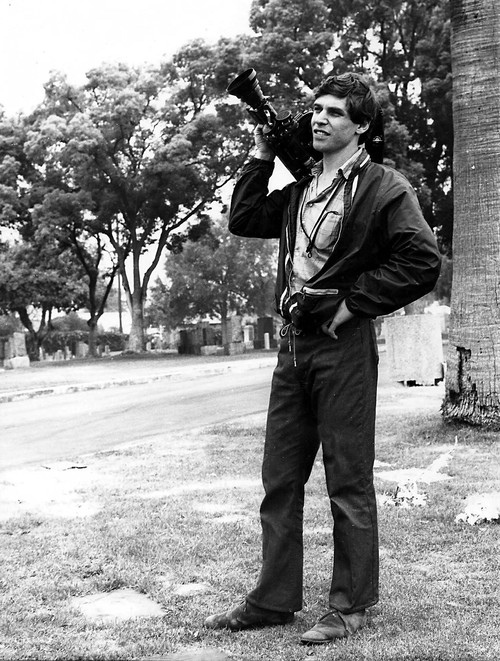
In an earlier conversation with me when I mentioned the blaxploitation theme I was having on my blog, you mentioned you had worked with Richard Roundtree on Diamonds as a second assistant director. Naturally I'm very curious, what was Shaft himself like?
After producing ”Lepke” Golan was trying to produce another movie in Hollywood but without success. At some point he put together the cast for his script Diamonds with Robert Shaw and Richard Roundtree to be filmed in Israel, I was the runner of his office then and he agreed that I will come with him to Israel to be a second Assistant Director and that is how I met Shaft. This was many years ago, to the best of my memory he was a very gentle and pleasant man. In Israel the movie ”Shaft” was not a very popular one so some people recognized him in the street but mostly not.

Could you tell us about your first two movies as a director that most are probably not very familiar with, the dramas For the Sake of the Dog and One More Chance?
After completing the work on the movie Diamonds I became Assistant Director in many Israeli movies but as time passed by I realized that that was not what I wanted to do, my goal was to direct so instead of just waiting for some producer to give me a check to do so I took an initiative. I wrote a script for a short film named ”For the Sake of the Dog” and using my own money and many volunteers from the industry I set to shot and edit this 30 minutes short. The movie was screened in the Israeli television and later on invited to participate in the Los Angeles ”Filmex” international film exposition in 1979.
Later on in the fall of 1979, I was working towards a Master's degree in Film at Loyola Marymount University in Los Angeles. Walking down the hall during a break between classes, I spotted a fellow film student dressed as he was, in typical Israeli garb - shorts and sandals. This was the beginning of my partnership with David Womark, which would lead to the student production of a full-length feature film, the first in the history of the film school. With school facilities, equipment and classmate crew available to us and plenty of chutzpah and ingenuity, David and I convinced the faculty to let them expand my half hour master's thesis into a full-length movie. Based on my own script, I recruited then-unknown actors Kirstie Alley (of Cheers), Johnny LaMotta (of Alf), and Michael Pataki.
Everyone volunteered their time and the project took off. Now we had to somehow find money for developing the negative. We took $15,000 in student loans, and deposited it in the bank as credit against the cost of processing the negative. As soon as the lab checked with the bank and gave us a line of credit, we withdrew the money for shooting costs, and started depositing film in the lab. We figured out that if we didn't pick up the negatives, we wouldn't be billed. Using this ploy, we shot without looking at the dailies, depositing miles of film, until one day a call came from the head of the lab's warehouse - "Either you come pick up this film or I'm throwing it out!" We went down to the lab where we found seventy cans of film and an angry manager who presented us with a bill for $30,000 and a demand for the money. After he calmed down a bit, we explained the situation to him, we convinced him that the only way we could pay the bill was for him to release the work-print to us so we could edit it and find a producer to bail us out. I think at some level he must have liked our chutzpah - at any rate, he agreed!
At this point, after one year of shooting weekends, and living on sandwiches and coffee, we had an unfinished film on our hands and no way to continue. I turned to Menahem Golan, an Israeli film producer who had just become the head of Cannon Films. Although I had only worked as an assistant for him, Golan was impressed with my energy and ambitious drive, and seeing potential in what had been shot so far, agreed to finance the rest of the movie. Both of the movies are social dramas dealing with the struggle of an ordinary citizen against the authorities.

You then went into a different direction and started making action movies, the first one being Revenge of the Ninja. Talk about taking a fish out of the sea, throwing it on land and tell it to start walking! I mean that's one of the wildest action movies I've ever seen, and I've seen a lot. Was the transition from making drama to action an easy one for you?
I just finished the work on my first directorial film ”One More Chance” when producer Menahem Golan was preparing to produce ”Revenge of the Ninja” a sequel to ”Enter the Ninja” he produced and directed earlier on. Since he did not want to direct it he was looking for someone to replace him. Golan was willing to take a chance on me. He knew I could put a movie together; I had proven that I could construct a scene, shoot, and edit logically.
The big question was whether I could handle action, could I tackle a fight sequence or a chase. Clearly I did not have experience in these areas, but when he asked if I could do it, with utmost confidence I gave a positive yes. I knew I was not going to let this once in a lifetime opportunity slip away. Apparently my self confidence assured them so the next question was what kind of salary I would demand. I told Golan to pay me whatever he saw fit and so the deal was made and I was given the script and asked to start pre-production immediately, with David Womark as line producer.
It is true that directing action takes some expertise but in my opinion any director that understands the cinematic language, filming and editing should be able to put together an action sequence. I had good teachers to usher me into the world of action cinema and I learned fast and found it challenging and yet satisfactory to direct action.

So, you got to work with the man who has become the symbol of the word ninja – Shô Kosugi. What can you tell us about him? Is he as impressive as the movies make him out to be?
So here I was, ready to tackle the challenge of my first big action flick. I was handed the script and introduced to Sho Kosugi, the tallest Japanese person I had ever met. Sho was the spirit behind the project, an accomplished martial arts fighter and Ninjitsu expert who had come a few years earlier to Los Angeles with Hollywood on his mind. Although I was familiar with Japanese samurai movies - I love the films of Akira Kurosawa, I knew very little of the Hong Kong Kung Fu genre and nothing about Ninjitsu.
Sho introduced me to both martial arts and Ninjitsu. We bought a few books and together watched many Chinese movies, without subtitles in theaters full of Chinese speaking audience members. Trying to digest all the information as fast as I could, I started to work on the script and construct a story board. Sho was working with the writer, Jim Silke, and me. He was the Ninjitsu advisor and in this capacity he made sure that every known Ninja weapon and every Ninja fighting trick, method, custom, ceremony, and accessories, would be included in the script.

Kosugi's real son, Kane, plays the son of his character in the movie. Was that a demand from his side, to get his son a part?
I don’t know, when I got involved the script was already written and the character of Kane was in it.
Kane's skills were pretty amazing; did he need a lot of prepping before filming the fight scenes?
All the preparation of Kane was done by Sho, so before filming his fight scene he was always ready.

That final fight at the top of the building is quite thrilling and very elaborate. How long did that sequence take to shoot?
It took more than a week to film that entire scene on the roof from beginning to end.
With Revenge of the Ninja, you actually made history as that was the first Hollywood movie with a Japanese man in the leading role. Do you feel that's a fact that often gets overlooked?
It is true that I directed the movie but the decision to make a Hollywood film with a Japanese leading man was Menahem Golan’s not mine. But since I directed it I guess it makes me also part of this historical event.

As impressive as that final fight in Revenge of the Ninja was, it doesn't compare to the first 15 minutes of your next movie – Ninja III: The Domination. I have to tell you, that intro is absolutely crazy! If the movie had ended after those 15 minutes, it would have been the best movie ever made, I'm sure of it, screw Citizen Kane! With that said, kicking off the movie with such an explosive start, did you find it hard to keep up that kind of entertainment for the 75 remaining minutes? I mean nothing could top that opening.
First of all thanks for the compliments but more to the point when making a low budget movie the director with his producing team have to make a decision how to allocate the limited budget. I like to open the action movies I directed with a bang; big action sequence to set up the tone but to keep up that pace for 90 minutes a much bigger budget is needed so for me it is big opening, big ending, big sequence in the middle and at least one big chase.
How many days did you spend shooting that epic opening?
We usually allocate to every major action sequence one week with two filming units and the a second unit stays behind to complete a shooting list I leave behind while the main filming unit moves on to shoot the next scheduled scene. Once in a while I like to check in on the second unit and see if they are advancing according to my vision.

With Ninja III, Lucinda Dickey took a break in-between shooting Breakin' 1 and 2 and tried her hand at becoming a ninja. As an experienced dancer, did she handle the fight choreography well?
The truth is that we cast Lucinda Dickey for the lead part of Ninja 3 before the first Breakin’ movie was even conceived. After we finished the filming Menahem Golan suggested her for the Break Dance movie the company started to prepare. In the order of distribution the first Breakin’ came out before Ninja 3.
Kosugi returns for the final part of the trilogy, but doesn't appear until around 30 minutes into the movie. Compared to his screen time as the lead in Revenge of the Ninja, he has a significantly smaller part in Ninja III: The Domination. Why was that decision made?
The producer Menaham Golan decided to move the Ninja franchise away from an Asian hero toward an American lead, for some reason in Ninja 3 he preferred it to be a woman. Sho was against it and agreed to participate in the movie only if he plays an expert that comes in and resolves the problem that a female Ninja cannot resolve by herself. Because of the nature of the story structure his character appears only 30 minutes into the movie.

Do you know if this upset Kosugi? I ask because he never made another movie for Cannon Films and made entertaining ninja movies with companies like Crown International Pictures and Trans World Entertainment instead.
My impression was that the fact that Menahem Golan decided not to have him in the lead part upset Sho Kosugi very much and therefore at the first opportunity he had to work with other companies, he left Cannon Films.
There are pictures from the movie floating around which shows that Kosugi actually had a lot more scenes in the movie which were cut. Do you know roughly how many minutes of his scenes were cut and if they still exist somewhere? It's a shame they weren't added as a special feature on the Shout! Factory Blu-ray release.
The rule in Cannon Films was that the length of all the movies we made was 95 minutes. Because of this restriction almost in every movie we had to keep some scenes out. Usually we left out scenes that were not as strong as the once that made it into the final cut. I don’t remember today what was cut out and I don’t think that when MGM took over the Cannon material they also took over the extra material of outtakes and unused scenes.

Other than the fighting scenes which I'm sure was all him, did Kosugi perform most of his own stunts?
Sho Kosugi was a very capable martial artist and accomplished athlete so in all action and fight scenes he performed his own stuff unless it was dangerous or called for special skill, only then a body double or stunt double would step in and take his place.
Apparently, you weren't satisfied with having made the craziest ninja movie ever, so you went ahead and made the craziest dance movie ever with Breakin' 2: Electric Boogaloo. How did that come about and was it a refreshing break in-between making ninja movies?
The director of Breakin’ was Joel Silbert and as far as I know he was supposed to direct the sequel. I don’t know why he did not, and I never asked, but at some point after the release of the movie Ninja III: The Domination that I directed with the same actress of Breakin’, Lucinda Dickey (Kelly), I was asked by the head of Cannon Films, Menahem Golan, to take over the directing of Breakin’ 2: Electric Boogaloo. It was as simple as that and yes it was very refreshing to direct it.

Had you seen the first Breakin' before making the sequel?
Yes I did.
Whose idea was it to make it so different in tone from the previous Breakin' movie?
The crew responsible for Breakin’ 2 namely the art director, the dance choreographer, the wardrobe designer, cinematographer, and myself as a director did not feel compelled to adhere to the tone and look of the first movie so in a way it was a cumulative decision. The “look” of the film is a result of the talks I conducted with the production designer during the pre-production period. It was our intention to exaggerate it to a point of saturation to create excitement, youthfulness and hope.

The first Breakin' was reportedly made in only 3 weeks, in order to be released ahead of another movie about breakdancing from Orion Pictures, Beat Street. How long was the shooting schedule for Breakin' 2: Electric Boogaloo?
It is absolute nonsense; it is impossible to make a movie the size of Breakin’ with its many dance numbers and other large scenes in 3 weeks. In any case it took us nine week of six working days each with two cameras units to complete the filming of Breakin’ 2 Electric Boogaloo.
There's a nice tribute to Fred Astaire's infamous ceiling dance in it, which two years later Lionel Richie also did a version of. Was that scene hard to set up and shoot?
It was not simple but with the knowledge and equipment we have here in Hollywood it was sufficiently accomplished. The idea to add a scene of Turbo dancing on the ceiling was Menahem’s. It was indeed inspired by a similar scene of Fred Astaire in the movie Royal Wedding. The way a tricky dance like this is done is by building a room that can be rotated a full circle upside down all the way. The camera is anchored to the floor and goes up when the ceiling comes down and the dancer on it. In the final shot it looks like the dancer is on the ceiling dancing upside down. The only difficult part is that everything in the windows and all the lighting setup has to rotate with the rotating room. The dancer also faces a challenge in reorienting himself every second to the revolving reality around him.

A nice surprise for me as a long time fan of Ice-T was to see him have a role in it. I think shock is a better word to describe it, because the outfit he wore in his first scene would probably ruin his image if he, the Godfather of gangsta rap, ever wore it out on the streets in real life. Do you have any memories of Ice-T to share?
Not in particular. Ice T was one of the first rappers and he was there when needed, doing his performance on stage as needed. I did not have to give him any directorial directions unless they were technical like where to stand and when to start. Other than that all we had to do is film his performance the best we could.

There are pictures of Muhammad Ali visiting the set at one point. Tell us about that.
One day while filming on location in Los Angeles, out of the blue, the legendary Muhammad Ali popped up on the set to see what we are doing in his neighborhood. It turned out that his house was next door to the one we were shooting in (former house of silent films star Mary Pickford) The Champ was very gracious, playful and friendly to everyone. It was quite an excitement and so we took a photo with him to commemorate the event.

Was the choreography set in stone or did you allow the dancers to improvise their moves?
I don’t understand anything in choreographing dances, we had a great chorographer Bill Goodson and he was in charge of the dancers, I am sure that he allowed the dancers to also improvise some moves here and there.
What do you feel is the harder thing to shoot - fight or dance choreography?
A dance number can be filmed uninterrupted from beginning to end again and again several times and all that is really needed are good dancers. Fight sequence in the other hand is very technical, segmented and at times dangerous, so it has to be filmed in segments and with extra care. Each of them presents its own unique challenges when it comes to filming them.
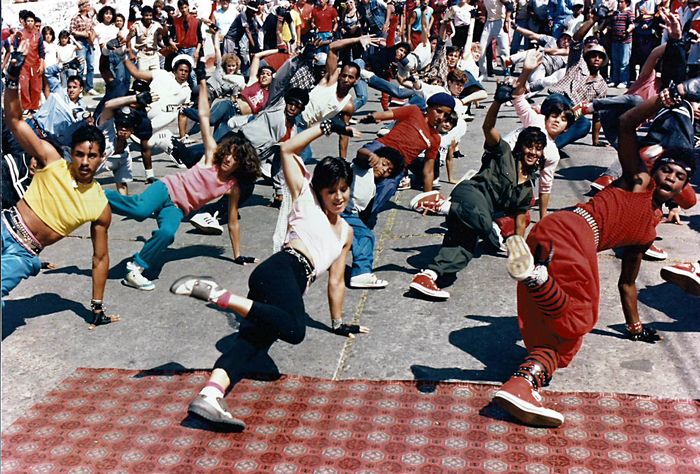
After Breakin' 2, you went back to making ninja movies, this time with Michael Dudikoff and Steve James in American Ninja 1 and 2. Dudikoff was not a martial artist when you made the first one, though I gather he got into martial arts later. Was it hard coming off of Revenge and The Domination where your lead actor could do every possible thing you wanted him to, while now having to rely on doubles and using certain angles that made it less obvious Dudikoff was being doubled for some shots?
First of all in Ninja III: the Domination, Lucinda Dickey was not a Martial Artist but rather a dancer and the people in charge of the fights choreography taught her all the necessary moves and being a dancer she picked up on them very fast. Michael Dudikoff was in top physical shape when he started American Ninja and for two weeks prior to filming he trained with top Martial Artist and our fight choreographer Mike Stone. Most of the stuff that you see him performing in the movie Michael did by himself guided by the fight choreographer and stunt coordinator Steve Lambert. Naturally at some dangerous points and when specific expertise was needed we used stunt doubles the way it is done in every action movie.

Steve James on the other hand, was an accomplished martial artist. This created some tension between them according to Steve, since that made Michael somewhat insecure. Do you remember any of this tension and did it create any problems on the set that you as the director had to handle?
Not at all.

You've probably been asked this a bunch of times before, but for those of my readers who don't know, could you tell us about that infamous scene in American Ninja 2 where Michael Dudikoff is in a room with Steve James, talking to a superior officer, but when they leave the room it's clear that Dudikoff's stand-in is walking out? Why was his stand-in in that scene when James didn't use one, and how could that mistake possibly not be spotted by the editor?
That particular day Michael Dudikoff was sick but he still stayed and did the scene in the office. Once we finished all his and Steve James on camera angles it was time to shoot from behind their back, since we had a very good body double for Michael to stand in for him, I sent him back to the hotel to rest. In the final editing we were supposed to see the double only from his back but because at the time the editors used editing machines with a tiny screen he did not notice that it was not Michael and used his exit by mistake.
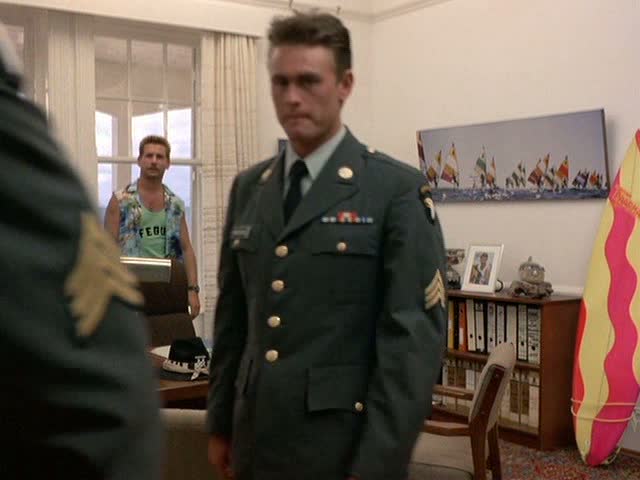
Having already done American Ninja 1 and 2, what was it that kept you from continuing with the franchise, which went on to make another two sequels? Were you just tired of ninjas?
No, I was not offered to direct those two sequels. The company decided to dramatically reduce the budget of the installments of the franchise and as a unionized director my salary became too expensive for them to pay and still achieve that low budget target, instead they hired a South African director and made the movies there with much shorter schedule and lower budget.
While it was Chuck Norris' The Octagon that first brought the ninja to the attention of moviegoers in the west, there's no doubt the ninja movies you were involved in is what made the ninja huge. Do you take pride in knowing things like Teenage Mutant Ninja Turtles probably wouldn't have brought so much joy to kids all over the world if it wasn't for you, Shô Kosugi, Michael Dudikoff and Cannon Films?
Yes it is quite flattering.

Believe it or not, during this ninja craze of the 1980's, there were a couple of Swedish ninja movies made. Most notable is Mats Helge Olssson's The Ninja Mission, which was a huge hit around the world and one of Sweden's highest grossing movies ever. Apparently, the producers even approached Golan & Globus and asked them to distribute the movie. Did you know about this and have you seen the movie? I could send you a copy if you'd like.
No, unfortunately I never heard about that movie.

I'm sending you a copy. You also made Avenging Force with Dudikoff and James, which is a sequel to Invasion U.S.A. with Chuck Norris. Could you tell us why Norris didn't reprise his role as Matt Hunter?
I was never told why Chuck Norris did not want to do Avenging Force (than it was called Night Hunter) but there are few different speculations floating around in the internet.

I think it would have been better if they had changed the name of the character, because they weren't very similar in my opinion. While Chuck Norris' Hunter was this unstoppable killing machine, Dudikoff's Hunter was much more human and vulnerable. Was the script changed to suit Dudikoff's on screen persona more when it was clear that Norris wouldn't be involved?
The only change that was made to the script was that instead of the little girl being Matt’s daughter she became his sister. Michael was too young to have a daughter.

Would you agree that it is the most brutal movie you ever did? I mean except for Hunter and his little sister, basically every other character we got to care for ended up dying, including two kids.
Yes you are right, but at the same time it is the best action movie I directed.
The way the movie ended opened up the door for more entries in the franchise, do you know if there were plans to make another one?
James Booth the writer planned it that way but we were sent by Cannon films to do American Ninja 2 right away and for some reason the company never perused that option.

The man who wrote the script for Hard Target seems to have borrowed some stuff from Avenging Force, namely the hunting aspects of the movie and the location, since both of them take place in New Orleans. Have you thought the same thing?
The men hunting idea is not totally original it appears in movies and literature in many variations for a long time, so you might be right but only to a certain degree.
I think you hit the nail right on the head when you said in Electric Boogaloo: The Wild, Untold Story of Cannon Films that Dudikoff should have been put in bigger movies with bigger budgets, not smaller ones. I think he has that natural charm and charisma that worked so well for Jean-Claude Van Damme. Do you think he deserved a similar career to the one Van Damme had in the late 80's and into the 90's?
Of course he deserved a greater career, Michael has the charisma and on screen presence of a great action hero. He should have been involved in much bigger budget movies.

You worked with Steve James in a total of four movies before he sadly passed away at the age of 41 in 1993. Could you tell us a bit about Steve James the person as well as the actor?
Steve James was a sweetheart of a man a real gentle giant. Our work together was pure joy; he loved action movies and was always enthusiastic to do his part on the set. His aspiration was to become the next black action star kind of the new Shaft and the way his career developed he was on his way to achieve that goal. He was an avid collector of “black” movies from all the way back to the beginning of cinema. His collection consisted of more than 4,000 disks and cassettes and in some cases even 16mm prints. Steve was very proud of his chiseled body and in every movie we made together he insisted on taking his shirt off at least one time during a fight or action scene.

R.I.P.
Another actor you worked a lot with is John LaMotta, who kept getting cast in your movies. Were you the driving force who kept casting him for roles in your movies?
Yes, Johnny LaMotta was the lead actor in the first full length movie I directed in 1980 “One more chance” He did it voluntarily and stuck with us throughout the entire filming schedule which was on and off one and a half year long. I always felt that I owe him for being loyal and thereafter cast him in every movie I directed whenever he was available. John LaMotta was a busy actor working all the time in movies, theater, and television.
As someone who grew up in the late 80's watching ALF at a very young age and then seeing him in your movies when I got older, he's always been an interesting actor to me. What was he like? Did he always have a cigar in his mouth like so many of his characters did?
Johnny LaMotta was a friend of mine until he recently passed away. He was a talented actor, singer, and piano payer so it was always fascinating to watch him perform, and yes, he loved cigars. In the Philippines while filming American Ninja he went to visit a famous local cigar factory to see how they are being rolled and buy them fresh right there.

Ultimately, Cannon Films went under due to money problems. How did you react to the end of this legendary company?
At that point in time when Cannon went away I was already directing movies for other producers and companies so it did not influence me personally. Luckily for me when all of the company assets were divided amongst various creditors all the movies I directed for them went to MGM that is a major distributor. Breakin’ 2 Electric Boogaloo ended up with Columbia Pictures and then Sony Entertainment.
What was it like working for them and how do they compare to other studios you've worked for?
I have known Menahem and Yoram for many years as mentioned earlier, many years before I directed Revenge of the Ninja - I worked as an assistant director on many of their films, even one that Menahem Golan directed (Diamonds with Robert Shaw). The way they worked was that Yoram Globus was in charge of finances, and had little input on the creative side; Menahem Golan was the creative producer, involved in all the stages of making the movies. His main interest was in the script and in the editing.

Were Golan and Globus easy to get along with, or did you have a lot of disagreements over some projects?
When it came to business Golan and Globus were not easy people to get along with and at times we probably had some disagreements but there were not too many of them. In most of the times we saw things eye to eye and in general I was eventually able to execute my vision in directing movies for them.
Did they give you a lot of leeway when you were shooting your movies, or were they more hands-on, making sure the movies came out just the way they wanted them?
During the shooting I was basically left alone. I would say that in this sense, it was very easy to work with them, as long as we did not go over budget or exceed the schedule - which I never did. They trusted me and we had a very good relationship.

There were lots of movies that Cannon was supposed to make that never ended up happening. Were you attached to direct any of those movies that never got made?
No I did not, but I was attached to some of Cannon movies that were eventually directed by other directors.
When you look back at the huge list of movies made by Cannon Films, is there a movie you wish you could have gotten to direct?
Out of all cannon movies I guess Runaway Train and King Solomon's Mines.
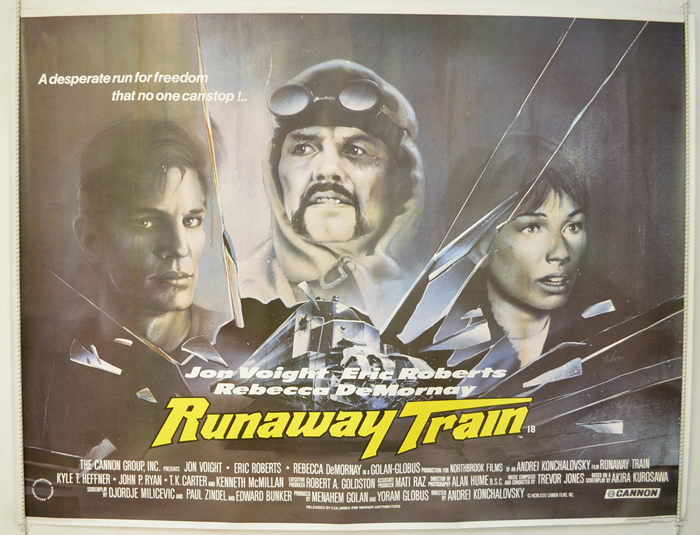
This is a cheap question, and I apologize, but I simply must know. Since you worked for Cannon for so long, did you ever run into Charles Bronson, who is one of my all-time favorite actors?
I visited once the set where J. Lee Thompson was directing one of the Charles Bronson movies; out there I ran for the first and only time into Bronson, he was actually a very private and reclusive man, most of the day he kept to himself so no words were exchanged between us.
When Cannon Films were no more, you moved to Cannon alumni Avi Lerner's Nu Image/Millennium Films, a similar company to Cannon that is still alive and well 25 years later. Would you say they've kept the Cannon spirit alive?
In many aspects, yes Nu Image is the continuation of Cannon Films, some of the key figures just moved from the one to the other, but on the other hand there are of course differences in style and motivation in the way the two companies are run and in their product.

While you were with them, you worked with David Bradley on several movies. I think I see a pattern here. You seem to enjoy working with actors you are comfortable with, who know how to give you what you want. A lot of great directors have done this, John Carpenter, Alfred Hitchcock, Michael Winner and Quentin Tarantino, to name a few. Am I on to something here, or was it just a coincidence that you often worked with so many familiar faces?
It was partially coincidental but also has to do with the good relationship I have and maintain with the actors.

For the first time in your career you worked in television in 1992, on the TV-show Sweating Bullets, which you directed six episodes of. How did you get that gig and what about the project interested you?
I was in Israel directing American Samurai when I was invited to meet the producers of this show and after a short interview they offered me to direct few episodes. I was happy to accept the offer since I was always interested to learn how directing for television is different from directing movies.
Was it a drastic change from directing a movie and did you adapt easily?
Telling a story through visual means is the same in any media be it a huge screen, a television set, or a Smartphone but directing episodes for a television series has a different discipline, working habits, and pace than directing a theatrical movie. In television the director is not an important member of the creative team as he is in films.
To date it's the only directing job you've ever done on a TV-show, though you did direct the TV-movie Operation Delta Force. Was it a conscious decision on your part not to work in the TV business?
Not at all, I just did not persuade a television career and was not offered again a job in directing for television. I just kept directing movies.

One oddity in your career that has me curious is that after directing movies for 21 years, you took a small step back and worked as a second unit director in the underrated Tobe Hooper horror movie Crocodile in 2000. How did you happen to work on that movie?
I knew Tobe Hooper from the Cannon days and at that point I was directing for Nu Image. Tobe was directing Crocodile for the same company and they needed a second unite director to handle some action sequences in the movie. I was between projects and asked by the producers to take it upon myself. I gladly agreed firstly because it was a chance to be around Tobe Hopper and secondly it was a chance to be involved in a horror picture which I never had an opportunity to do earlier. Consequently it was also beneficial observing and understanding the way giant mechanical puppet operate that came in handy when I directed next the movie Spiders 2.


As previously mentioned, you appeared on the documentary Electric Boogaloo: The Wild, Untold Story of Cannon Films. It has gotten some criticism for focusing too heavy on the bad things people had to say about the company. Do you agree with that criticism? What were your feelings when you first saw it?
Mark Hartley, the maker of the documentary, did a fabulous job. He presented his point of view, another film maker might have presented in a different way, and we have to respect it. The movie is getting a lot of praise for the deep research and thorough job that went into the making of it, quite an achievement.

It's too bad we didn't get to see you in the other documentary produced about Cannon Films, The Go-Go Boys: The Inside Story of Cannon Films. What's the reason behind that?
I was approached to participate but schedule wise it did not work out.
You've directed movies with some very memorable villains in them. One of the biggest villains in real life today, according to a lot of the media anyway, is Donald Trump. If you were to make a movie with Donald Trump in one of the roles, would you have him play a hero or a villain? I'm going to go out on a limb here and guess you'd make him play a hero, because if I'm not mistaken (and you can correct me if I'm wrong) he's one of the most pro Israel presidents the US has had in a long time.
I tell stories in a fantasyland and it has nothing to do with my political points of view, they are just stories. If someone would pay me well to direct a movie with Donald Trump as a hero or a villain and the script is half decent, I would agree right away, it sure would be an extraordinary experience.
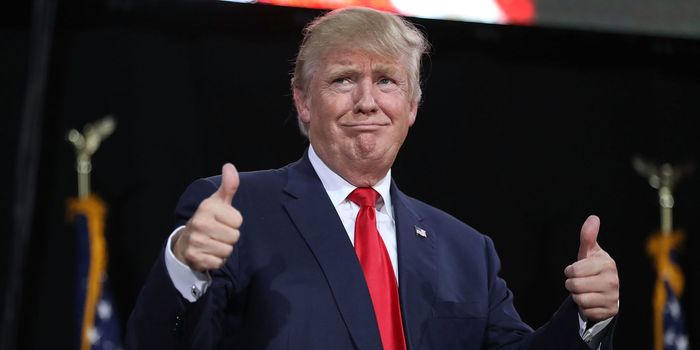
"I tell you, Sam, if you'd put me in one of your movies, it would be yuge, I'm talking trillions of dollars at the box office, OK? My cameo in Home Alone 2 made it the greatest success ever. Guardians of the Galaxy, Fast and the Furious, Avengers, they're all fake movies, OK? I'm the real deal and the perfect hero, I tell you I'm great. Just give me a call, it will be great. Oh, and I'll totally use the profits to build that wall."
How would you describe your directing style?
I follow the old Hollywood classic way of making movies. In every scene, after visually introducing the viewer to the geography and relationship within the scene, and after establishing the mood I strive to place the viewer in the heart of what is happening on the screen, action or dialogue. I achieved it by filming from many various angles and frame sizes from wide “long shots” to “tight” close ups so later on in the editing the editor and me can create visually exciting scenes that gets the viewer emotionally involved.
In Electric Boogaloo, you mention that Golan and Globus had that Israeli temperament. Do you also have that and does it affect your actions as a director with the cast and crew? Somehow, you don't strike me as the Michael Winner type...
No, strangely enough I do not suffer from the hot headed Israeli Attitude or temperament, maybe it can be contributed to my European upbringing (my parents are from Poland) As a director I always try to be polite never explode and not to be drawn into arguments. I constantly try to maintain a cheerful set keeping the cast and crew happy and positive.

One thing a lot of your movies have in common is that they are so fun, wild and crazy. Did that tone in the movies rub off on the cast and crew? Did everyone have a good time making the movies?
I want to believe that you are right. Making movies is a group effort and we spend so many hours together every day that it is better to have fun while doing it rather than a miserable time. This way we enjoy the process and yes, it rubs off and shows in the final product on the screen.
What do you think it is that turns a movie into a cult movie over time and why do you think so many of yours have reached that cult status all these years later?
You are asking here the million dollar question. If we knew the answer, if we knew the formula to a successful movie we all could have been millionaires now. But no one knows, it is only that sometimes all the stars are aligned, all the elements come and jell together; the story, the actors, the cinematography, the choreography, the editing, the music, and the right director that ties it all together and the magic happens. It is undeniable that there is some talent involved in the process and the approach. I believe the reason that some of the movies I directed stood the test of time and even gained cult status is that the story is solid, the characters are determined, the path is clear, the action is exciting, it was all taken lightly, it is never boring and the viewer is having fun with what is happening on the screen. It is 90 minutes of good entertainment and escapism.

Do you keep in touch with any of the people you worked so closely with for so long? Like Yoram Globus, Michael Dudikoff, David Bradley and so on?
Regretfully not, from all the actors I worked with I only keep in touch regularly with Michael Dudikoff , Judie Aronson, and Tadashi Yamashita. I was friend also with Steve James until he passed away and David Bradley until he disappeared. Also with crew members and producers I keep in touch with only a few like Frank DeMartini, Steve Lambert, Boaz Davidson, Gideon Amir and few others thanks to Facebook.

Have you kept any props from your movies over the years? If so, could you name some and which one your favorite is?
Regretfully not, I wish that I have kept some items from the movies I directed but unfortunately I did not. At the time of making them we did not know that those movies would become cult classics and have so many followers. The only item I kept is the silver mask of the evil Ninja from Revenge of the Ninja and that only because it was the first big movie I directed so for me it has some nostalgic value.
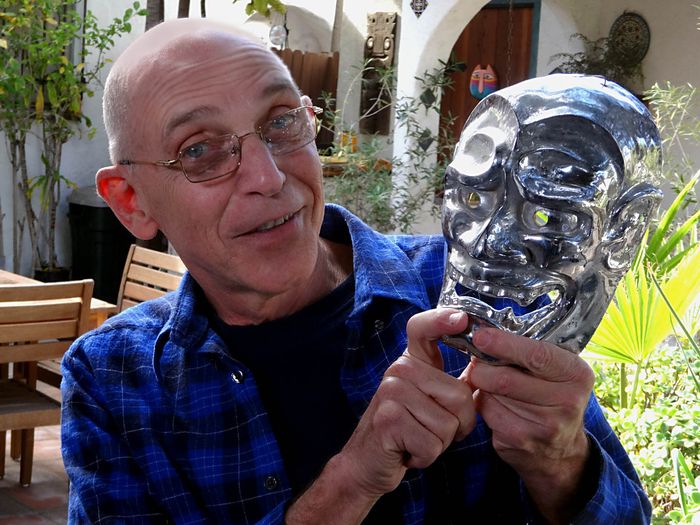
Having made several very successful action movies, especially on the international market, with very little budget to work with, you'd think big movie studios would take notice and offer you some bigger project to sink your teeth in. Do you think that being involved with Cannon Films did the opposite and restricted you from making bigger movies with bigger studios, because of Hollywood snobbery?
I think so, but I am also partially to blame since I did not vigorously persuade this rout. In Cannon I was guaranteed to direct one movie after the other and in the studio system a director can be stuck in the “development” purgatory working many years on developing scripts and projects that never materialize. So I chose the path of doing and not waiting but yet it is too bad I never got the chance to direct a big budget studio movie.
You haven't directed a movie since 2003, but I'm sure you could easily still be making them if you wanted to with Avi Lerner and Nu Image/Millennium Films. So, why did you decide to hang up your director's chair?
The budgets of the type of action movies I used to direct have shrunk so much that it is ridiculous, directors are asked to do them in five weeks and we used to make them in 8 or 9 weeks with two units. I don’t know of a way that one can direct a decent action movie with such a low budget and short schedule and I rather not be involved in this kind of film making. On the other hand I am not being offered to direct big budget movies or even low budget non action films so I concentrate on other creative activities like designing and building furniture which might not be that exciting but very satisfying without the aggravation.
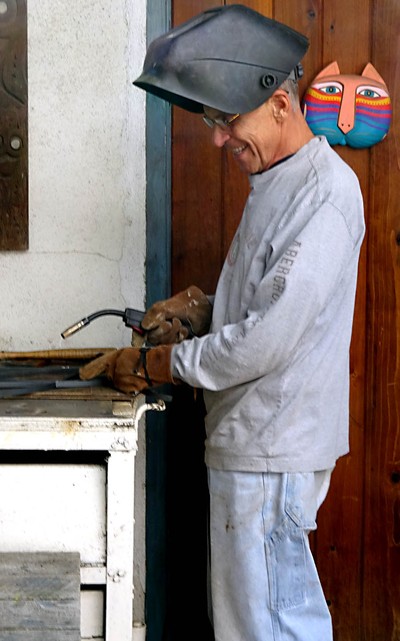
It's safe to say your career has been dominated by action movies. Was it always your hope to become an action director?
Not at all; at the beginning I saw myself as a director that will direct social dramas maybe adventures but not action. It just came my way and then I was offered to direct those action movies one after the other and I did. But as I was directing them I embraced the challenge and enjoyed doing them.
You directed 23 movies in 24 years, which one would you say was the most difficult to make?
Avenging Force was physically draining, the most challenging and demanding movie I directed. Day after day in the Louisiana swamps directing action in the rain many times all night long in a location that was one and a half hour drive from the hotel we stayed in. This one was difficult to make but it looks great.

Which one would you call your favorite and why?
It is hard to say I love Breakin’ 2 Electric Boogaloo for its fun good filling atmosphere, I like Riverbend for it controversial subject. Avenging Force for its excellence in story and execution, and American Ninja for its sense of innocence.
Which one is your least favorite and what happened during the process of making the movie that it ended up being so disappointing?
Let’s say that I am not crazy about McCinsey's Island. During the making of it I was not clear about the storyline, the end goal of the characters, and the type of movie I was directing so all in all I am disappointed with the results.
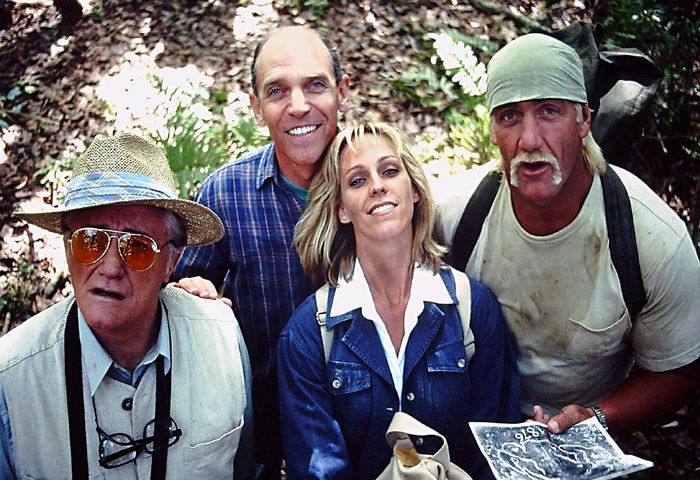
Finally, how would you like to be remembered as a director?
Hopefully as one that succeeded in directing movies that brought joy, excitement, and thrill to the viewers that watched them. Enabled them to transform for 90 minutes from this reality to another reality where the just overcomes the evil, where dreams and wishes are fulfilled and there are always happy endings. Movies that are fun to watch.
Mission accomplished, Sam. Anything you'd like to point my readers to?
In my website www.samfirstenberg.com the readers can find more stories, photos and related material. I have a Facebook page with updates and a photo album “Tales from the Movies” with many photos, each accompanied by a short story, a memory, or anecdote. All worth visiting.
All the best to everyone, Sam.
Thank you, Sam.
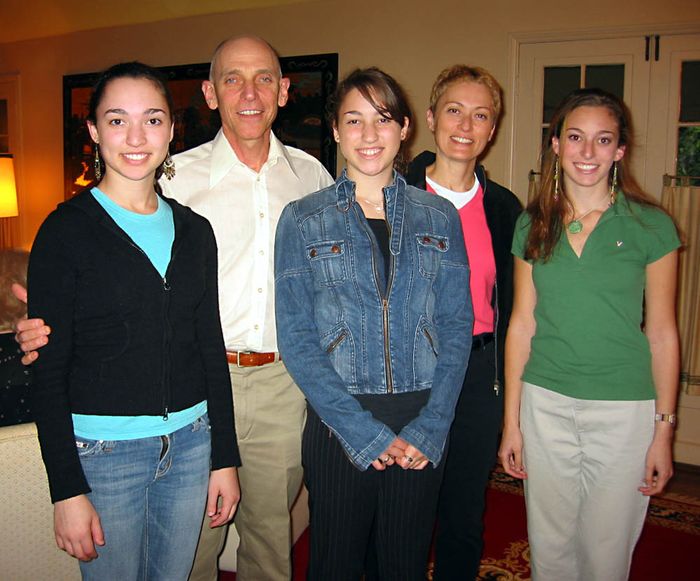
Sam, the family man
If those of you who read this interview found it interesting, I'm sure you'll love Marc Siedelmann's upcoming career-spanning interview book with Sam Firstenberg, promised to be loaded with unique badass film history. The book is called Stories From the Trenches: Adventures in Making High Octane Hollywood Movies With Cannon Veteran Sam Firstenberg, which just a few days ago reached its Kickstarter goal and will be available within six months after the campaign ends on May 15th.
You can still visit the Kickstarter page and pre-order the digital book version for 16 Euros or the actual book for 30 Euros. You think this interview was long? The book will be an estimated 600 pages! I've got my copy pre-ordered and if you're a fan of Sam or just entertaining, badass action movies, I can't imagine anyone regretting doing the same.

Thank you all for reading and a special thanks of course to Sam Firstenberg for his time and all the pictures he provided the interview with!
(Verkar inte funka att skriva kommentar på engelska så testar på svenska.)
Tack för det här! Alltid intressant och kul att höra från någon i filmindustrin, speciellt någon som jobbat åt Cannon och Golan-Globus.
Jag var inte bekant med Sam Firstenbergs verk (främst för att jag normalt sett inte är så förtjust i ninjafilmer), men jag brukar oftast uppskatta Cannon-filmer så det är ett par titlar här som fångade mitt intresse.